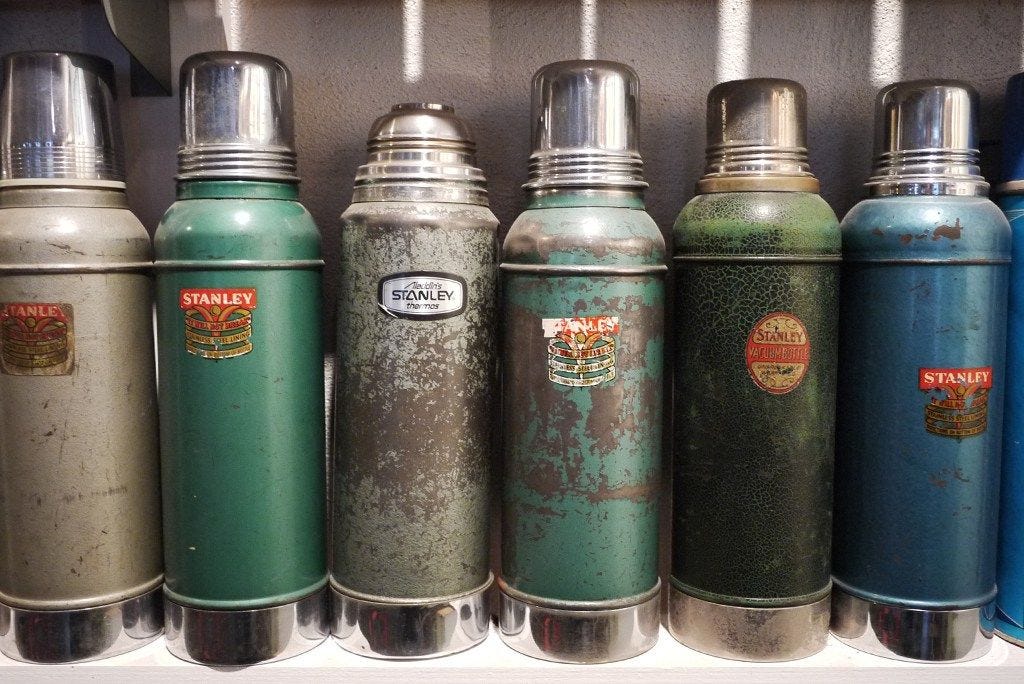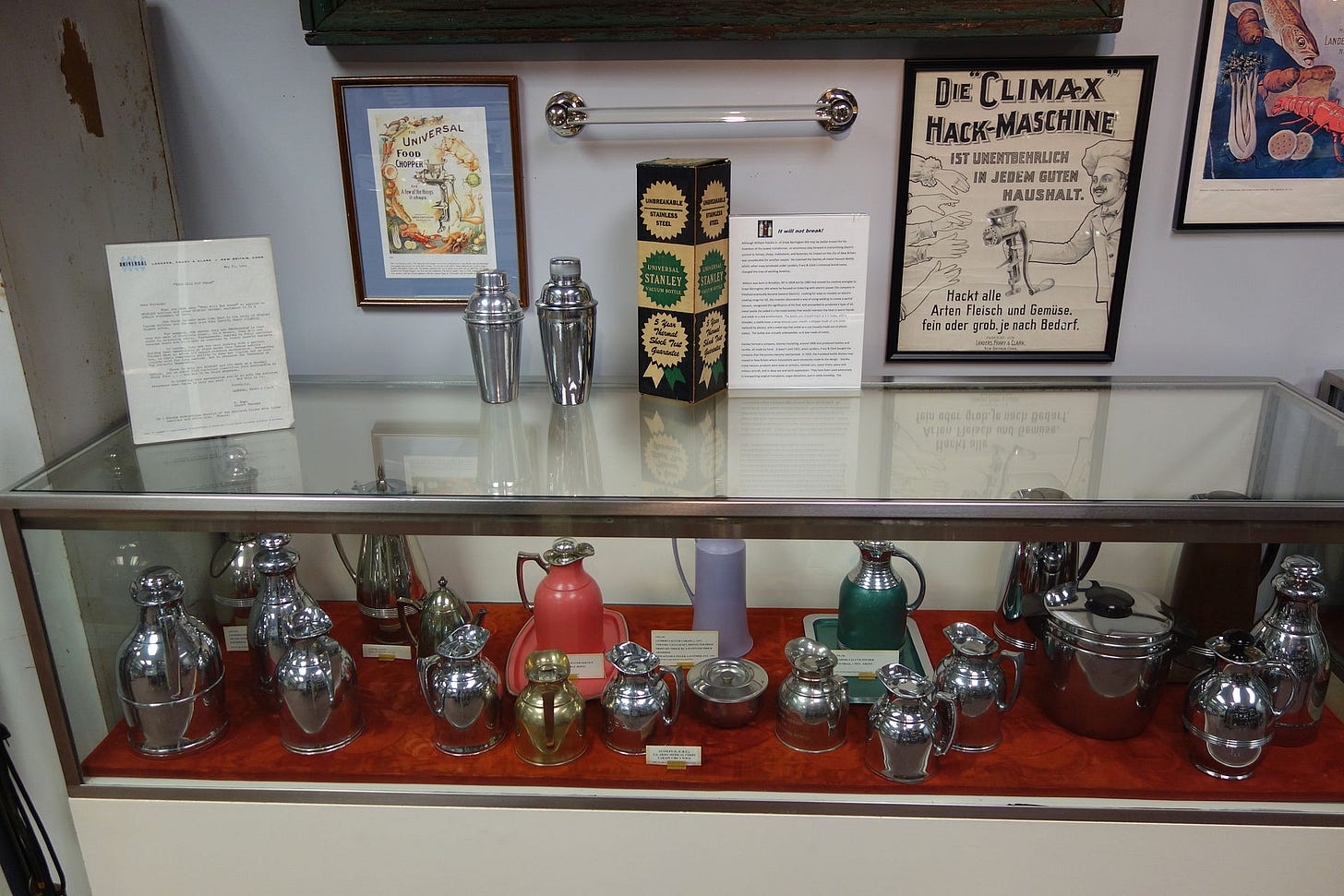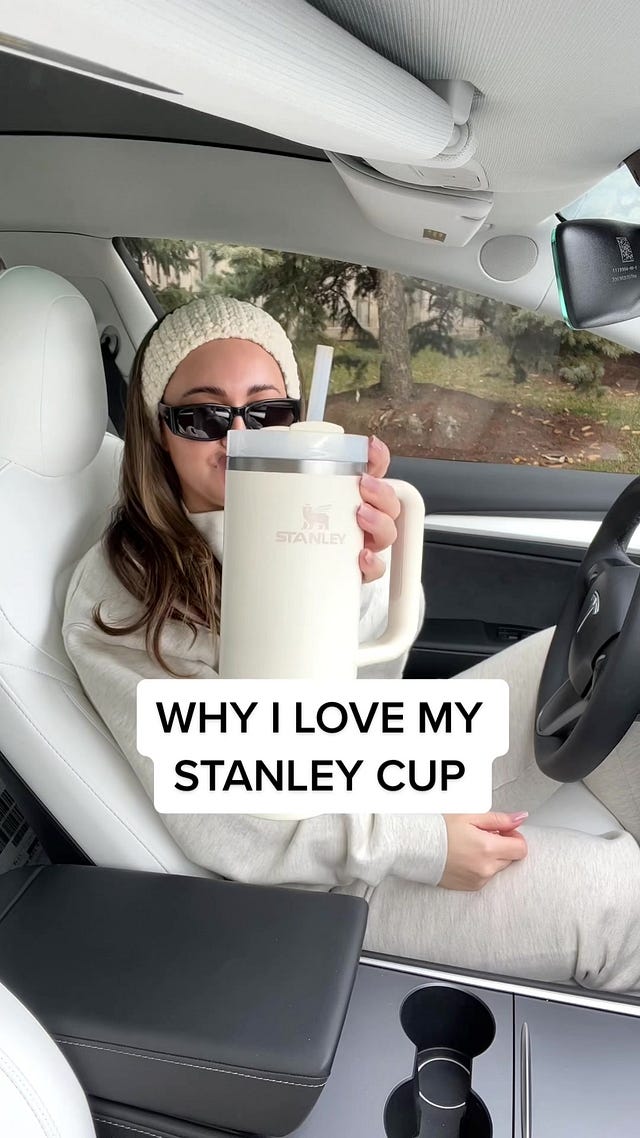They created this thermos in 1913. A century later it's the TikTok obsession of millennial & gen Z women – Here's what we can learn from the Stanley Cups
Case Study on Stanley cups
What’s good young and eager mind!
Last post of the week already :)
Let me get your input on something…
I’ve been writing 5 posts a week for a few years now. But I’m considering dialing it back to once a week. I’m considering using the time that frees up to make YouTube vids.
Let me know your thoughts. Do you prefer the current schedule or does once a week work for you?
Alright, let’s get to it.
In 1913, William Stanley Jr. invented the all-steel, double-wall vacuum bottle which was used during World War II. Over 100 years later the thermos dropped in popularity so much that they stopped restocking it altogether. One genius marketing campaign later and it's blowing up on TikTok, growing 275% year over year and selling out constantly.
Here's Stanley in 4 bullet points:
Notice how your expertise can be useful in other domains [1]
In 1913 William Stanley Jr. created the Stanley bottle as a result of his work with transformers. He discovered that a welding process he was using could be used to insulate a vacuum bottle with steel instead of glass.
Why does this matter?
At the time, vacuum-insulated bottles were lined with glass, and
"They did a fine job keeping coffee hot... That is until one of those suckers got damaged."
Glass in your cup of coffee may ruin your day, but in 1913, the equivalent of having to fork out $150-$200 for a new bottle could ruin your entire month. This is where Stanley came to save the day. One of his key innovations was "Char-Vac," where charcoal dust was packed between two stainless steel walls while the vacuum insulation was created.
This method made the bottles damn near indestructible. In 1915, he began mass production of the Stanley bottle but unfortunately passed away the next year at 57 years old.
Find your audience
Initially, the Stanley bottles were used by; Boeing B-17 Flying Fortress heavy bomber pilots during World War II, the crew on deep sea explorations, the cattle industry for transporting bull semen, and... believe it or not, by organ couriers to deliver human organs to transplant centers.
Talk about fucking badass...
Trouble in paradise
It won't come as a shock to learn that Stanley started marketing itself as the durable receptacle for tough men doing tough shit.
But by 2020, the popularity of the Stanley had tapered so much that they weren't restocking them.
Create demand by positioning your product differently & deeply understanding your customers
A few bloggers made the case that Stanley might find more success in the female influencer space.
So the new Stanley Quencher was born.
One of the first giant water bottles that was car-cupholder friendly and had a handle.
It carries 40 (or even 64 ounces) of liquid which capitalizes on the growing hydration trend. It keeps things like your iced coffee cold for over 12 hours. There's no cap to unscrew because it has a straw for sipping. It comes in colors women find cute like cream, orchid, and eucalyptus.
"I bought the punk color & love the dainty color of it."
- Reviewer on Amazon showing they nailed their target psychographic
"I am not ashamed to admit that I bought this tumbler mostly for the look. [...] I was seduced by this beautiful lilac color, and it doesn’t disappoint in person. Color is a tricky thing to get exactly right, but Stanley’s designers accomplished it. Looking at my tumbler while going about my daily tasks gives me an outsize sense of pleasure."
 Tiktok failed to load.
Tiktok failed to load.Enable 3rd party cookies or use another browser
By partnering with brands like Olay and Starbucks it fits in nicely with the brands that psychographic ( = shared beliefs/interests) segmentation already uses. Or what Reddit colloquially refers to as "starter packs."
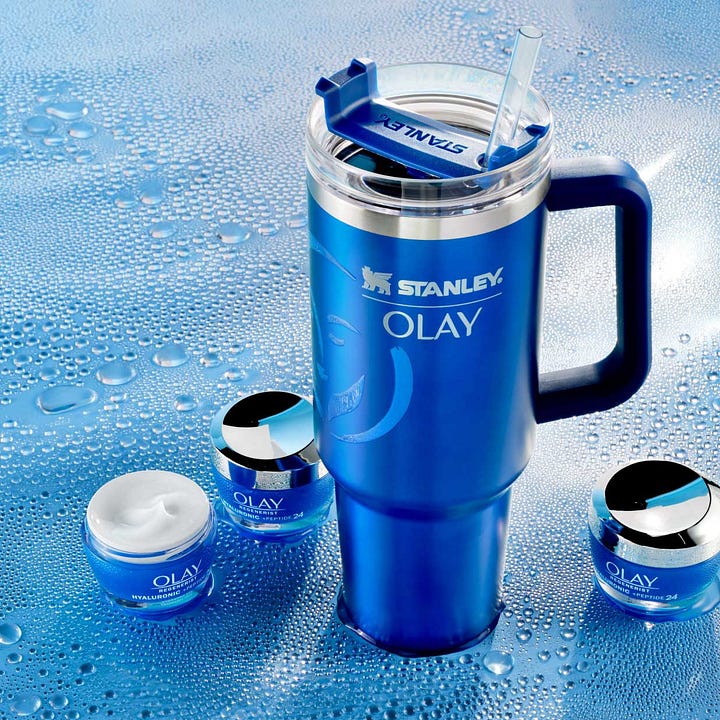
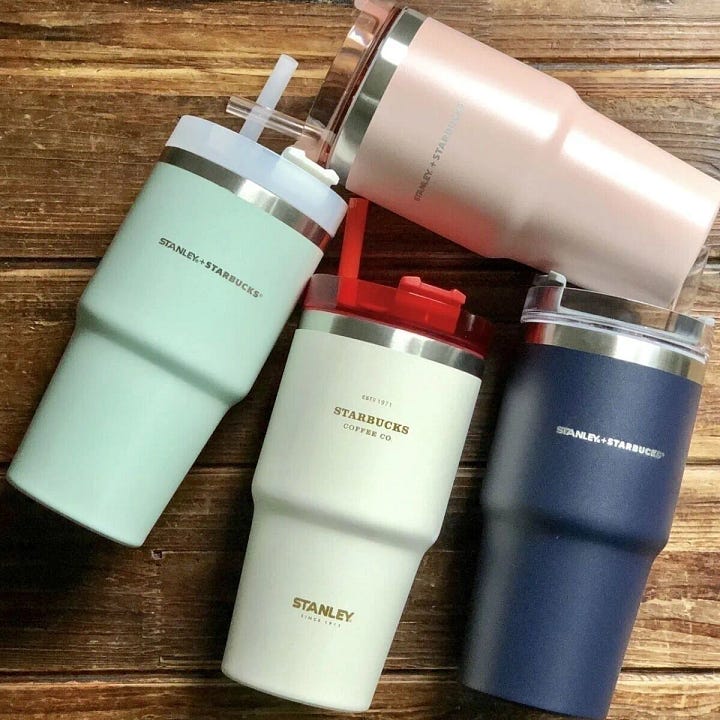
The Stanley Quencher is now doing so well, it's almost immediately out of stock when new colors launch.
In fact, it became so popular, price gougers snatched them up and sold them at double the price.
Fun fact: This product is responsible for what's now called "the de-influencing trend."
One more note... This is where the real money is
A water bottle has shit margins. But if you can transform it into a lifestyle accessory, the sky's the limit.
When people buy your product to signal "I belong to this tribe" the amount of money you can charge goes up exponentially. [2]
NOTES
[1] In 1978 and 1979 Professor Austin wrote 2 papers classifying luck. He talked about Chance 1 through 4. Blind luck, serendipity, sagacity, and altamirage.
What we're talking about here is essentially sagacity or altamirage. Luck that stems from your expertise (recognizing things others could not) or your idiosyncrasies (luck because of your unique quirks/traits/or passions).
[2] In marketing science this is called conspicuous consumption or invidious consumption. Conspicuous consumption means buying stuff to increase your status. Invidious consumption means buying stuff with the goal of provoking envy.
[3] William Stanley Jr. was legit genius. he held 129 patents for electrical devices and his practical coil circuits were the prototypes for the modern transformer.
In Philadelphia, Stanley designed one of the first electrical installations (at a Fifth Avenue store). In 1885, Stanley built the first practical alternating current transformer. In 1886, on March 20, Stanley demonstrated the first complete system of high voltage Alternating Current transmission, consisting of generators, transformers, and high-voltage transmission lines. His system allowed the distribution of electrical power over wide areas. He used the system to light offices and stores along the main street of Great Barrington - the location of his West Avenue family home. All of this formed the basis of modern electrical power distribution.




